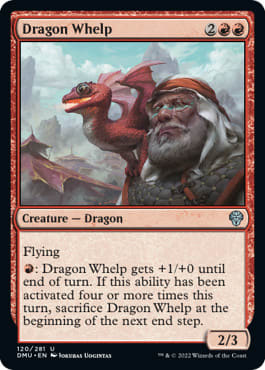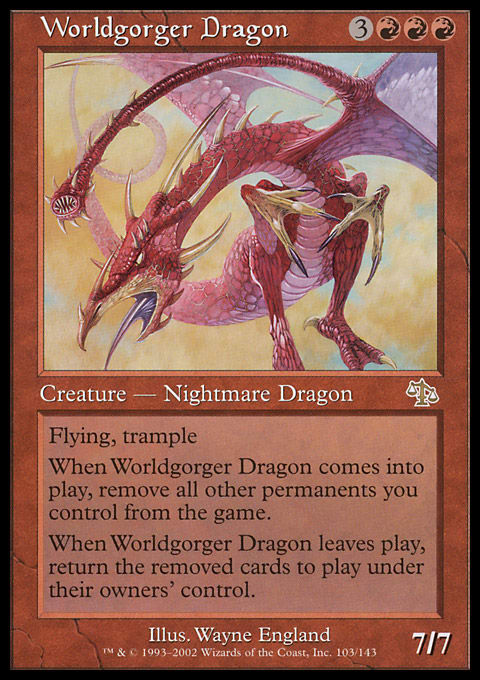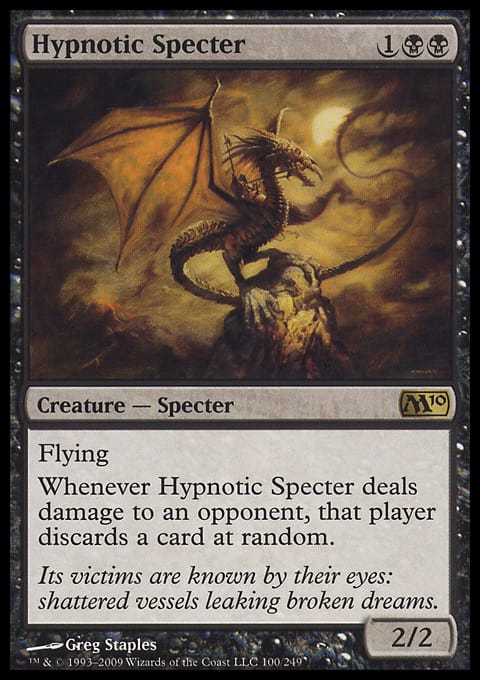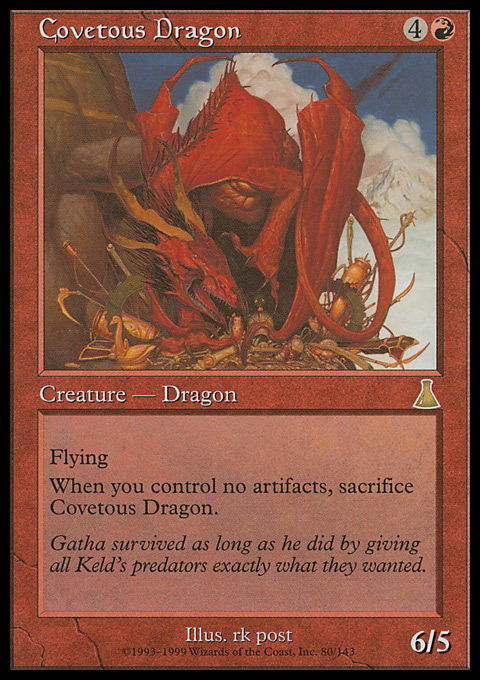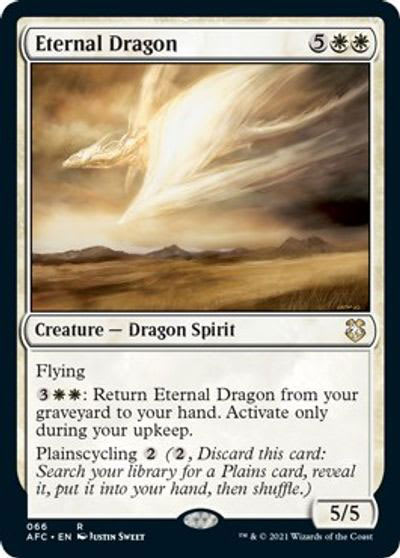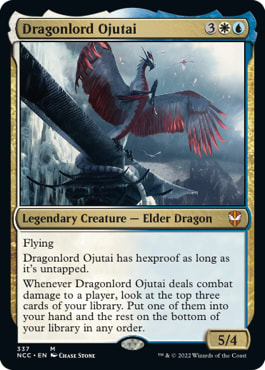Well, we're a third into The Year of the Dragon... So now seems as good a time as any to visit Magic's greatest Dragons.
Dragons are iconic and important; if for no other reason than they're the most iconic creature in Dungeons & Dragons, a game that was so influential in the creation and intent behind beloved Magic.
It's with that in mind that I'd name Dragon Whelp as the 10th best Dragon of all time.
Number Ten
There have been a number of Dragons at ![]()
![]()
![]() that are at least arguably better. Rakdos Pit Dragon is a little bit bigger, and lacks Dragon Whelp's self-destructive streak. But can we say that any of these is greater than Dragon Whelp?
that are at least arguably better. Rakdos Pit Dragon is a little bit bigger, and lacks Dragon Whelp's self-destructive streak. But can we say that any of these is greater than Dragon Whelp?
Dragon Whelp, along with Shivan Dragon, is Magic's original Dragon. But unlike its big sister, Dragon Whelp was a standout of the early Pro Tour.
My old podcast partner Patrick Chapin made Top 8 - nay, Top 4 - of his first Pro Tour packing Dragon Whelp. This Top 8 was of course the first of many, culminating in a win a Pro Tour Journey Into Nyx almost two decades later.
Sligh | Patrick Chapin, 3rd Place Pro Tour Dallas Juniors 1996
- Creatures (23)
- 1 Ball Lightning
- 1 Orcish Cannoneers
- 2 Dragon Whelp
- 2 Dwarven Miner
- 2 Orcish Librarian
- 3 Gorilla Shaman
- 4 Goblin Balloon Brigade
- 4 Ironclaw Orcs
- 4 Orcish Artillery
- Instants (11)
- 1 Guerrilla Tactics
- 2 Death Spark
- 4 Incinerate
- 4 Lightning Bolt
- Sorceries (4)
- 1 Hammer of Bogardan
- 3 Pillage
- Artifacts (1)
- 1 Black Vise
- Lands (21)
- 17 Mountain
- 1 Strip Mine
- 3 Mishra's Factory
- Sideboard (13)
- 4 Anarchy
- 3 Manabarbs
- 2 Meekstone
- 3 Pyroblast
- 1 Red Elemental Blast
Dragon Whelp outclassed Shivan Dragon early simply because of its cost. Six mana was prohibitive even in the less optimized days of the mid-1990s; on the other hand, Dragon Whelp served a lot of functions. It was the top of the curve. It was a mana sink. It was even a Delayed Blast Fireball!
Players at the time both neglected their life totals in favor of card advantage and card drawing (outside of specifically Necropotence) was pretty inefficient. So it was common for the Dragon Whelp to just kill the opponent, despite the fact that both Swords to Plowshares and Lightning Bolt were legal and Staple at Pro Tour Dallas.
Number Nine
Worldgorger Dragon has the distinction of being the only Dragon to have ever hit the Banned and Restricted lists. It was banned for over a decade in Legacy, and was also unwelcome in Commander for a number of years.
It's got to be good, right?
If Worldgorger Dragon were in your graveyard, you could target it with Animate Dead. This would put Worldgorger Dragon onto the battlefield, where it would exile all your other permanents - including all your lands, and the Animate Dead that put it on the table.
This would create a situation where you could potentially generate infinite mana.
But that's not all!
What actually happens is that the two cards - Animate Dead and Worldgorger Dragon - just keep looping one another. Imagine you have no way of interacting with the opponent's graveyard, the Dragon, or the triggers it puts on the stack. What do you think happens next?
If the Worldgorger Dragon player doesn't have another creature in the graveyard, this isn't even necessarily good for them. But yeah, as the only Dragon ever to get banned? We have to recognize it as legitimately great.
Fun aside: Here are some of Worldgorger Dragon's contemporaries on the Banned and Restricted List:
Number Eight
Rorix Bladewing is a little unassuming compared to some of the other Dragons on this list; but much like the greatest Dragon(s), it is commemorated here based on its flexibility.
Sometimes a Goblins deck would bring Rorix in as a flying threat against people optimized to kill small creatures after sideboarding. Sometimes it would fight alongside Akroma, Angel of Wrath in some kind of ![]()
![]() control deck like Astral Slide. There were Big Red decks; and decks that became Big Red decks.
control deck like Astral Slide. There were Big Red decks; and decks that became Big Red decks.
But to get a real understanding about how flexible this Dragon was, look no further than this Extended deck by young PT standout Gadiel Szleifer.
Reanimator | Gadiel Szleifer, Pro Tour Columbus 2004
- Creatures (11)
- 3 Rorix Bladewing
- 4 Putrid Imp
- 4 Akroma, Angel of Wrath
- Instants (8)
- 4 Brainstorm
- 4 Vampiric Tutor
- Sorceries (21)
- 1 Show and Tell
- 1 Sickening Dreams
- 3 Duress
- 4 Cabal Therapy
- 4 Careful Study
- 4 Exhume
- 4 Reanimate
- Artifacts (4)
- 4 Chrome Mox
- Lands (16)
- 2 Island
- 6 Swamp
- 4 Polluted Delta
- 4 Underground River
- Sideboard (15)
- 2 Show and Tell
- 1 Cranial Extraction
- 1 Echoing Truth
- 1 Energy Field
- 1 Energy Flux
- 2 Gilded Drake
- 3 Phyrexian Negator
- 4 Smother
Gadiel's deck could only make Red mana by discarding another copy of Rorix to Chrome Mox if you can believe it! But he opted for "two sets of wings" to fight and fly alongside Akroma, as if it were Block Constructed. Gadiel had hundreds - maybe thousands - of fatties to choose from in Extended, but opted for the Onslaught Block standout because it hit a powerful overlap between toughness and haste. As good as Akroma? Not quite. But Scotty Pippin is also a six-time NBA Champion and Hall of Famer.
Number Seven
Two words: Kai Budde.
Two more words: World Champion.
Every hero has an origin story. The German Juggernaut's was behind a 6/5 for 5 that met Jackal Pup with third-turn Wildfire.
Big Red | Kai Budde, 1999 World Championship
- Creatures (8)
- 4 Covetous Dragon
- 3 Masticore
- 1 Karn, Silver Golem
- Spells (32)
- 4 Wildfire
- 2 Mishra's Helix
- 2 Worn Powerstone
- 4 Cursed Scroll
- 4 Fire Diamond
- 4 Grim Monolith
- 4 Temporal Aperture
- 4 Thran Dynamo
- 4 Voltaic Key
- Lands (20)
- 13 Mountain
- 3 Ancient Tomb
- 4 City of Traitors
- Sideboard (15)
- 2 Boil
- 3 Earthquake
- 1 Mishra's Helix
- 1 Phyrexian Processor
- 2 Rack and Ruin
- 2 Shattering Pulse
- 4 Spellshock
Number Six
Glorybringer is the stand-in for any number of Dragons at ![]()
![]()
![]() . All of them are 4/4 or 5/5, have haste, and present some other kind of cool ability. Sometimes they tap blockers; others, they double in size. To the best of my knowledge only one of the type has ever won a Pro Tour in the hands of a Hall of Fame GOAT candidate:
. All of them are 4/4 or 5/5, have haste, and present some other kind of cool ability. Sometimes they tap blockers; others, they double in size. To the best of my knowledge only one of the type has ever won a Pro Tour in the hands of a Hall of Fame GOAT candidate:
Ramunap Red | Paulo Vitor Damo Da Rosa, 1st Place Pro Tour Hour of Devastation
- Creatures (26)
- 3 Hazoret the Fervent
- 3 Kari Zev, Skyship Raider
- 4 Ahn-Crop Crasher
- 4 Bomat Courier
- 4 Earthshaker Khenra
- 4 Falkenrath Gorger
- 4 Village Messenger
- Planeswalkers (2)
- 2 Chandra, Torch of Defiance
- Lands (24)
- 14 Mountain
- 2 Scavenger Grounds
- 4 Ramunap Ruins
- 4 Sunscorched Desert
I mean, making a treasure is cool and all, but Glorybringer is also perhaps the most legitimately powerful Dragon of this model in-context. Haste was particularly spectacular on this one. It could get its money and then take off the next attack because it was too busy eating the opponent's best creature.
Number Five
We've already associated a number of Dragons with Pro Tour Champions and even Hall of Famers. But we don't think of Patrick Chapin as "the Fledgling Dragon guy". Chapin personally loves decks like Abzan or The Rock the most, but if anything, he's the Jace guy. Kai isn't "the Covetous Dragon guy" either. He can win with a wet paper bag, but I imagine him with Psychatog or Ramosian Sergeant.
Which is kind of what makes Ruth so remarkable.
Brian Kibler actually won a Pro Tour with Baneslayer Angel, declaring her "the best large creature of all time" ... I don't think he ever walked back that statement, despite winning his next Pro Tour with Primeval Titan.
But we don't think of Kibs as either the Baneslayer Angel guy or the Prime Time guy. We think of him Cloaking up Rith, the Awakener and shoving a thousand Saprolings down the throats of whichever fellow Pro Tour Champions and Hall of Famers unlucky enough to get in his way.
Dragonmaster | Brian Kibler, Pro Tour Chicago 2000
- Creatures (25)
- 2 Rith, the Awakener
- 3 Jade Leech
- 4 Ancient Hydra
- 4 Birds of Paradise
- 4 Blastoderm
- 4 Llanowar Elves
- 4 River Boa
- Instants (3)
- 3 Wax // Wane
- Sorceries (4)
- 4 Armageddon
- Artifacts (4)
- 4 Chimeric Idol
- Lands (24)
- 8 Forest
- 4 Brushland
- 4 City of Brass
- 4 Karplusan Forest
- 4 Rishadan Port
- Sideboard (15)
- 4 Armadillo Cloak
- 2 Flashfires
- 3 Kavu Chameleon
- 1 Obliterate
- 2 Simoon
- 3 Tsabo's Decree
Fatty Dragons were cool in Chicago. For example, Zvi Mowshowitz played Two-Headed Dragon. But Rith was the biggest, and had a huge advantage with 6 toughness against the removal of the day (Assault // Battery, Ghitu Fire, or Urza's Rage)... so became unstoppable with Armadillo Cloak.
Kibler also defied expectations, not just in deck design but game play with his everything-splashing The Red Zone deck. Armageddon (symmetrical) in a room full of Fires of Yavimaya (asymmetrical)? What was more, Kibler surprised more than one ![]()
![]() opponent by leaving Armageddon in, and blowing up the world when he had even a slight advantage on the battlefield.
opponent by leaving Armageddon in, and blowing up the world when he had even a slight advantage on the battlefield.
Number Four
What's better - nay greater - than a Dragon?
How about two?
Broodmate Dragon was the top end of the most pervasive deck in the Standard of its era. Cards like it, which represented self-contained card advantage, changed how decks were built.
Jund | Simon Gortzen, 1st Place Pro Tour San Diego 2010
- Creatures (18)
- 3 Broodmate Dragon
- 3 Siege-Gang Commander
- 4 Bloodbraid Elf
- 4 Putrid Leech
- 4 Sprouting Thrinax
- Planeswalkers (2)
- 2 Garruk Wildspeaker
- Instants (4)
- 4 Lightning Bolt
- Sorceries (9)
- 2 Rampant Growth
- 3 Maelstrom Pulse
- 4 Blightning
- Lands (27)
- 3 Mountain
- 3 Swamp
- 4 Forest
- 1 Rootbound Crag
- 2 Dragonskull Summit
- 2 Lavaclaw Reaches
- 4 Raging Ravine
- 4 Savage Lands
- 4 Verdant Catacombs
- Sideboard (15)
- 1 Maelstrom Pulse
- 4 Great Sable Stag
- 4 Deathmark
- 3 Master of the Wild Hunt
- 2 Terminate
- 1 Pithing Needle
Number Three
Eternal Dragon remains one of the most popular high-end creatures in Premodern, today. But twenty years ago, it was truly a format-defining card.
Osyp Lebedowicz won a Pro Tour with his ![]()
![]() Lightning Rift / Astral Slide deck before Eternal Dragon was even printed! Once it appeared, that strategy shot through to the stratosphere.
Lightning Rift / Astral Slide deck before Eternal Dragon was even printed! Once it appeared, that strategy shot through to the stratosphere.
But what made the card so cool was how applicable it was to other strategies.
[kibler from https://decks.tcgplayer.com/magic/standard/brian-kibler/g-w-control/4188]
G/W Control | Brian Kibler, 2004 US Nationals
- Creatures (4)
- 4 Eternal Dragon
- Instants (18)
- 2 Gilded Light
- 4 Oxidize
- 4 Pulse of the Fields
- 4 Renewed Faith
- 4 Wing Shards
- Sorceries (11)
- 3 Decree of Justice
- 4 Akroma's Vengeance
- 4 Wrath of God
- Lands (27)
- 3 Forest
- 12 Plains
- 4 Elfhame Palace
- 4 Temple of the False God
- 4 Windswept Heath
- Sideboard (15)
- 2 Darksteel Colossus
- 2 Duplicant
- 2 Mindslaver
- 4 Purge
- 2 Reap and Sow
- 3 Tooth and Nail
This was the best performing Standard deck... At the height of full-on Affinity! Skullclamp? Disciple of the Vault? No problem!
At the other end of the metagame was the dedicated Tooth and Nail strategy, which usually relied on a broken mana engine of some kind, and in Standard, tended to be Mono-Green.
Kibler's deck, on the back of Eternal Dragon facilitating good old, regular, land drops (with some help from Temple of the False God) was able to flatten Affinity and Goblins with removal and life gain in Game 1... Or transform into Tooth and Nail itself to win other matchups.
Whoever built this deck must have been a genius; some kind of truly great.
Number Two
Speaking of truly great, the second-best Dragon in the history of Magic is actually about five Dragons. But this Top 10 list would be super boring if five slots were just Dragonlord Dromoka, Dragonlord Ojutai, and their contemporaries.
Dragonlord Ojutai was the super standout, because untapping it was basically playing Magic on "easy mode". But all the cycle had something awesome to contribute. Most of them could completely dominate Planeswalkers, for instance. Almost all of them were good for tapping out on defense. You could then gain an advantage the next turn, and tap out for another Dragon to defend again. Really, this was a great time to be playing Standard.
Mono-Blue/Five-Color Dragons | Michael Flores
- Creatures (10)
- 1 Dragonlord Atarka
- 1 Dragonlord Silumgar
- 2 Icefall Regent
- 3 Dragonlord Dromoka
- 3 Dragonlord Ojutai
- Planeswalkers (1)
- 1 Ugin, the Spirit Dragon
- Instants (18)
- 1 Disdainful Stroke
- 1 Dragonlord's Prerogative
- 1 Voyage's End
- 2 Anticipate
- 2 Nullify
- 3 Dig Through Time
- 4 Dissolve
- 4 Silumgar's Scorn
- Enchantments (2)
- 2 Encase in Ice
- Artifacts (2)
- 2 Perilous Vault
Number One
As with "the #2 Dragon" the #1 slot actually goes to a cycle: The Kamigawa Dragon Legends.
Believe it or not, Gifts Ungiven - which featured both Keiga, the Tide Star and Kokusho, the Evening Star - was more dominant in its Block Constructed than Ravager Affinity was in Mirrodin Block.
Much like Rorix Bladewing, the Kamigawa Dragons appeared in a wide variety of strategies. They might be most famous for Gifts Ungiven, but they were also high end finishers in Wildfire decks, UrzaTron variations, and perhaps most importantly, tap-out Control decks.
Unlike the other great Dragons, the Kamigawa cycle changed how Magic was played on a fundamental level, creating new tools for Control players and broadening our notions of card advantage.
It would be impossible to pick just one deck that showcased how good this cycle was - especially since Yosei, the Morning Star was close to the best, and enabled a wildly different Greater Good strategy - so I'll just pick a deck where Ryusei, the Falling Star not only saw rare play, but was alone undefeated on Day One of the Pro Tour:
Izzetron | Osyp Lebedowicz, Pro Tour Honolulu
- Creatures (8)
- 4 Keiga, the Tide Star
- 4 Meloku the Clouded Mirror
- Instants (14)
- 2 Telling Time
- 4 Electrolyze
- 4 Mana Leak
- 4 Remand
- Sorceries (9)
- 1 Blaze
- 1 Invoke the Firemind
- 1 Tidings
- 2 Pyroclasm
- 4 Compulsive Research
- Enchantments (2)
- 2 Confiscate
- Artifacts (4)
- 4 Izzet Signet
- Lands (23)
- 2 Tendo Ice Bridge
- 4 Shivan Reef
- 4 Steam Vents
- 4 Urza's Mine
- 4 Urza's Power Plant
- 4 Urza's Tower
- 1 Minamo, School at Water's Edge
- Sideboard (15)
- 2 Pyroclasm
- 4 Annex
- 4 Giant Solifuge
- 2 Repeal
- 1 Ryusei, the Falling Star
- 2 Smash
LOVE
MIKE
















